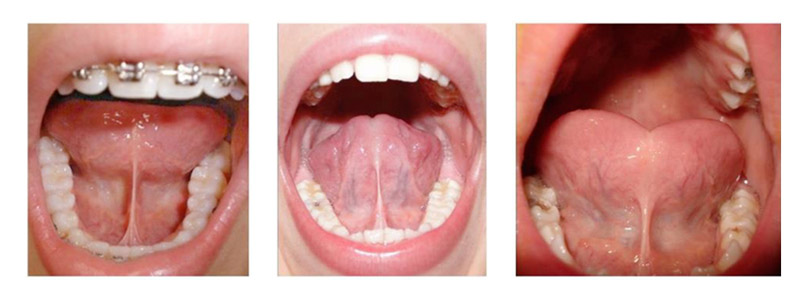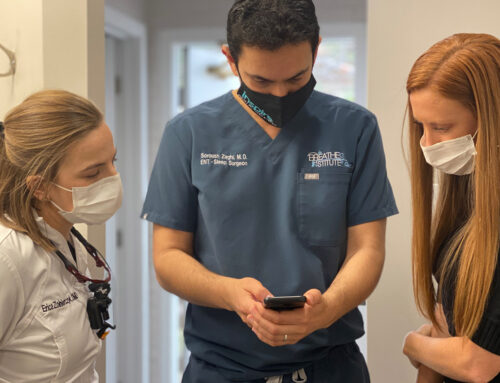A frenectomy is a simple surgical procedure for releasing a tongue-tie. During the procedure, a surgeon (doctor, dentist, or ENT) is surgically releasing a restricted lingual frenum.
The lingual frenum (or frenulum) is the line of tissue under the tongue. Everyone has one, but in some people, it’s restricted – this is known as a tongue-tie or Ankyloglossia or Tethered Oral Tissue. This restriction can be severe, or it can be quite mild but, in many cases, the restriction can lead to a range of problems.
Tongue-Tie Symptoms
In babies, a tongue-tie is often linked to problems with breastfeeding, although a tongue-tied baby may well be able to breastfeed with no trouble at all.
The restriction caused by a tongue-tie can lead to changes in the development of the mouth, face, and skull, often accompanied with an open mouth resting posture or mouth breathing in children. This can in turn lead to symptoms including speech difficulties, ADD and ADHD, sleep disordered breathing conditions such as sleep apnea, and jaw and facial pain and tension.

This research paper from the International Journal of Pediatric Research sums up the situation quite well:
“Children with untreated short frenulum developed abnormal tongue function early in life with secondary impact on orofacial growth and sleep disordered breathing (SDB). The changes in orofacial growth related to factors including short lingual frenulum lead to SDB and mouth breathing very early in life.
Recognition and treatment of short frenulum early in life – at birth if possible – would improve normal orofacial growth.”
Other Names For A Frenectomy
The tongue-tie release procedure is usually called a frenectomy but there are other names that you may encounter.
A frenotomy/frenulotomy is a simple incision into the connective tissue at the bottom of the tongue to free the tongue from the floor of the mouth. This is usually done for babies. The full frenectomy procedure is also known as a frenulectomy or frenuloplasty or functional frenuloplasty. This involves removing or altering the connective tissue under the tongue.

The Frenectomy Procedure
In the vast majority of cases, the procedure is done using local anesthetic. General anesthetic is rare with this procedure.
The procedure is low risk and can be performed with a laser, a scalpel, or scissors. When it’s done by laser, no sutures are required. With a scalpel or scissors, sutures will be placed to help the wound heal. Wound healing usually takes one to two weeks, although it may take longer. Pain is usually not a major factor and can be managed with mild painkillers in most cases.
Myofunctional Therapy And The Frenectomy Procedure
Myofunctional therapy exercises are critical for proper wound healing and to allow the tongue to return to full function. Think of it this way – the tongue has never had a full range of motion because it’s always been restricted. Just removing the restriction won’t allow the orofacial muscles to function optimally.
Just like a badly broken leg that’s been in a cast for a long time needs physical therapy to regain function, we need to strengthen and retrain the tongue after the release. Many doctors who perform the procedure have made myofunctional therapy exercises part of their treatment protocol. Patients are required to do two to six weeks of exercises to prepare the tongue for the frenectomy procedure. This really does lead to better results, so I’m glad to see this requirement becoming the norm.
Post-surgical exercises are also necessary to stop the tongue-tie from reattaching. The tissues of the mouth are exceptionally good at healing, so reattachment is a concern especially considering that the tongue has never learned to rest in the correct position and the patient has never been able to swallow properly.
These post-surgical exercises are followed up with a full myofunctional therapy program to restore full and optimal functionality. Once all these steps are followed, the results of the tongue-tie release are usually excellent, and last for the long-term. I see this in my patients all the time – with the right doctor doing the procedure, the results can be life-changing!
A Video About The Frenectomy Procedure
This is a video about frenectomies from my YouTube channel. This channel is full of videos relating to myofunctional therapy including a whole playlist covering tongue-ties. I think it’s a great resource for parents.




